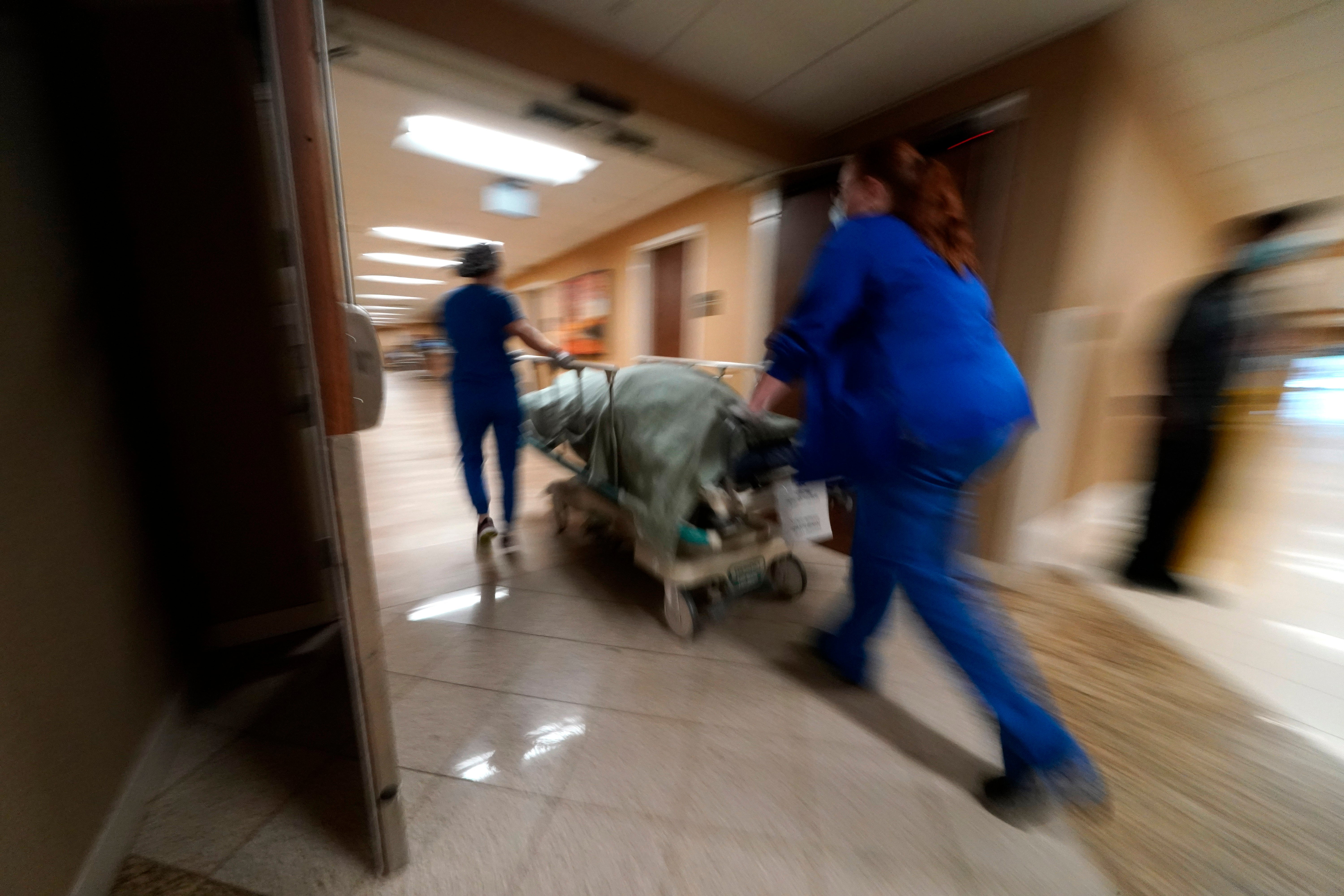2021 on track to surpass last year as nation's deadliest
U.S. health officials say 2021 is shaping up to be even deadlier than last year

Your support helps us to tell the story
From reproductive rights to climate change to Big Tech, The Independent is on the ground when the story is developing. Whether it's investigating the financials of Elon Musk's pro-Trump PAC or producing our latest documentary, 'The A Word', which shines a light on the American women fighting for reproductive rights, we know how important it is to parse out the facts from the messaging.
At such a critical moment in US history, we need reporters on the ground. Your donation allows us to keep sending journalists to speak to both sides of the story.
The Independent is trusted by Americans across the entire political spectrum. And unlike many other quality news outlets, we choose not to lock Americans out of our reporting and analysis with paywalls. We believe quality journalism should be available to everyone, paid for by those who can afford it.
Your support makes all the difference.U.S. health officials say 2021 is shaping up to be even deadlier than last year.
It's too early to say for sure, since all the death reports for November and December won’t be in for many weeks. But based on available information, it seems likely 2021 will surpass last year's record number of deaths by at least 15,000, said Robert Anderson, who oversees the Centers for Disease Control and Prevention s death statistics.
Last year was the most lethal in U.S. history, due largely to the COVID-19 pandemic. A CDC report being released Wednesday shows 2020 was actually even worse than the agency previously reported.
The report presents a final tally for last year of about 3.384 million U.S. deaths, about 25,000 more than a provisional count released earlier this year. Such jumps between provisional and final numbers are common, but 2020's difference was higher than usual because of a lag in death records from some states that switched to new electronic reporting systems, Anderson said.
The CDC this week also revised its estimate of life expectancy for 2020. Life expectancy at birth that year was 77 years, a decrease of 1.8 years from 2019. The agency previously estimated the decline at 1.5 years.
Anderson said it's likely that the nation will see more than 3.4 million deaths in 2021. Other experts said they think deaths for the year will end up either about the same as in 2020, or higher.
“It's really sad,” said Ali Mokdad, a mortality statistics expert at the University of Washington
A large reason is COVID-19, which hit the U.S. hard around March 2020 and became the nation's No. 3 cause of death, behind heart disease and cancer.
Last year, COVID-19 was the underlying cause in about 351,000 deaths. This year, the number is already at 356,000, and the final tally could hit 370,000, Anderson said.
Experts also think the 2021 numbers will be affected by a drug overdose epidemic that is expected to — for the first time — surpass 100,000 deaths in a calendar year.
An increase in annual deaths is not unusual. The annual count rose by nearly 16,000 from 2018 to 2019 — before COVID-19 appeared.
But the coronavirus clearly had an impact. The nation had the smallest population gain rate in history between July 2020 and July 2021, primarily because of the COVID-19 deaths, said Kenneth Johnson a University of New Hampshire researcher.
Officials had hoped COVID-19 vaccines would slash the death count. But vaccinations became available gradually this year, with only 7 million fully vaccinated at the end of January and 63 million at the end of March.
Since then, many Americans have chosen not to get vaccinated. The CDC says 204 million Americans are fully vaccinated — or about 65% of the U.S. population that are age 5 and older and eligible for shots.
Indeed, that's a big part of why COVID-19 deaths could climb despite the availability of effective vaccines, Mokdad said. The appearance of new, more transmissible variants of the coronavirus only made the problem worse, he added.
___
The Associated Press Health & Science Department receives support from the Howard Hughes Medical Institute’s Department of Science Education. The AP is solely responsible for all content.